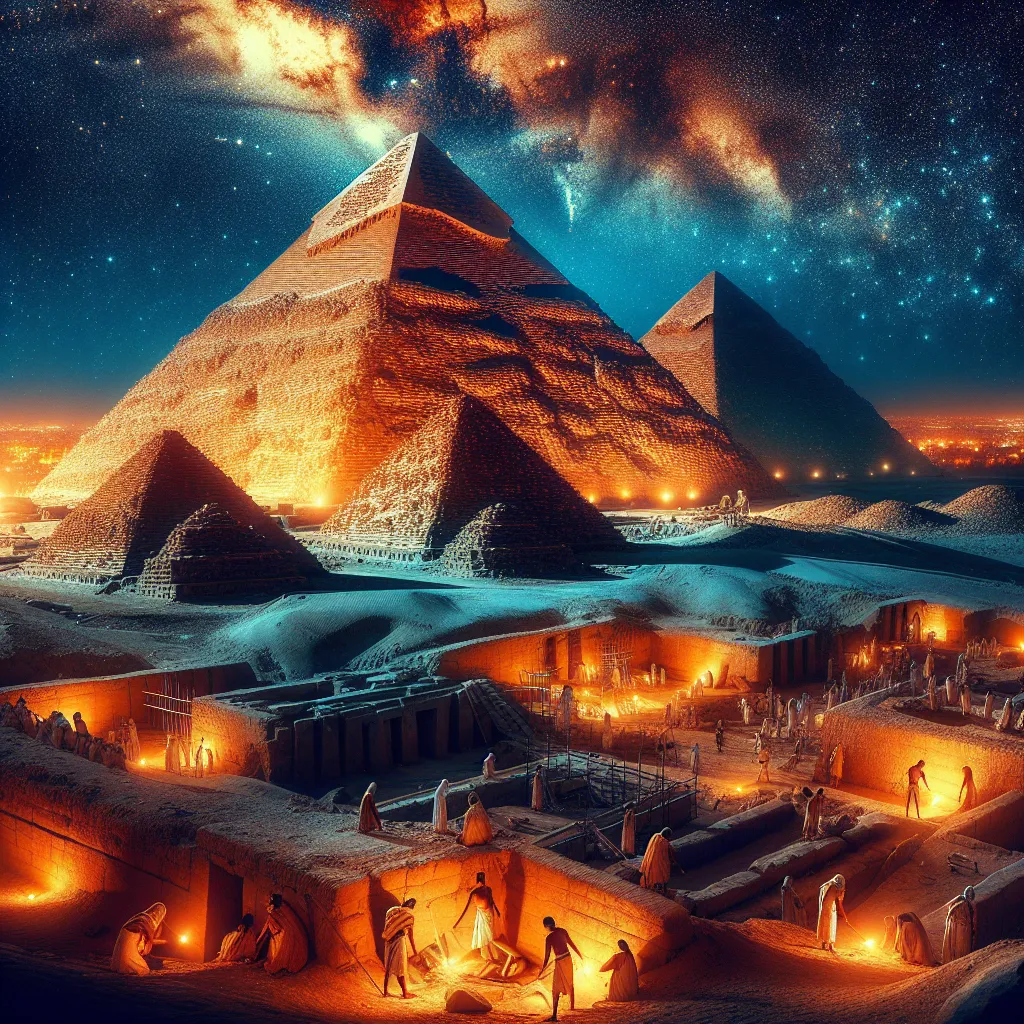The pyramids of Egypt, standing tall and proud over the city of Cairo, have fascinated people for thousands of years. Built more than 2,000 years before the birth of Christ, these giant structures were originally constructed as tombs made from shining white limestone, meant to protect the secrets of the dead for eternity. They’ve sparked countless myths and scientific puzzles over the centuries, particularly about how they were built so precisely. These mausoleums, standing hundreds of feet high and precisely true to within inches, raise questions about the intricate labor and technology of ancient Egypt.
The pyramids are a testament to the sophistication of ancient construction techniques. Without the wheel or modern tools, the Egyptians managed to build the Great Pyramid, which stands 481 feet tall and contains 2.3 million blocks, some weighing up to 50 tons. This structure has stood the test of time for nearly 4,500 years and was considered the tallest man-made structure for centuries. The careful alignment of the pyramid, true to within a twentieth of a degree of true north, shows the Egyptians’ remarkable knowledge and precision.
Inside the pyramids, the craftsmanship continues to impress. The complex network of passageways and chambers was built using some of the hardest rocks available, with stonework so precise that even a credit card cannot slip between the stones. Early Egyptologists, in their quest to uncover the secrets, used dynamite which unfortunately may have destroyed more clues than it uncovered. However, advancements in technology are now helping scientists to unlock even more of the pyramids’ secrets.
The journey to build these colossal structures began around 2,600 BCE with the construction of the step pyramid at Saqqara, which marked a significant breakthrough in architecture. Pharaoh Snefru’s innovations led to the first true pyramids, setting the stage for his son Khufu’s Great Pyramid at Giza.
Surveying and marking the site was a significant challenge for ancient architects. They used simple yet effective methods like observing the polar stars to ensure precise alignment. They built trenches filled with water to create perfectly level foundations, a technique remarkably similar to modern spirit levels.
Cutting and transporting the enormous amounts of stone required was another enormous task. Copper tools, surprisingly strengthened by naturally occurring arsenic impurities, were used to carve the softer limestone. For harder stones like granite, which copper chisels could not penetrate, workers used a combination of copper saws and quartz sand, demonstrating an incredible understanding of available materials and tools.
Remarkably, the pyramids’ construction involved intricate planning and massive labor. Contrary to the popular image of slave labor, the workforce likely consisted of skilled workers and possibly seasonal labor from across Egypt. Excavations have revealed workers’ tombs, indicating that these individuals were honored rather than oppressed.
Why did the Egyptians expend so much effort and resources on building these monumental tombs? The answer lies in their beliefs. Pyramids were not just tombs; they were intricate machines designed to transform the dead Pharaohs into eternal beings, safeguarding and sustaining Egypt. The ancient texts found in the pyramids highlight their role as gateways to the stars.
One fascinating theory links the layout of the Giza pyramids to the stars of Orion’s Belt, suggesting an astronomical master plan. Narrow shafts running through the pyramids may align with critical stars, believed to guide the Pharaohs’ spirits to join the gods in the afterlife.
Even today, the pyramids continue to captivate and astound. Modern technology, including advanced robotics, is being used to explore hidden chambers that could still hold ancient treasures. The ongoing quest to uncover these secrets only adds to the pyramids’ enduring mystery and allure.
The pyramids of Egypt are more than just ancient tombs. They are symbols of the ingenuity and spiritual beliefs of a civilization that continues to fascinate us, standing as a testament to human achievement and the quest for immortality.






